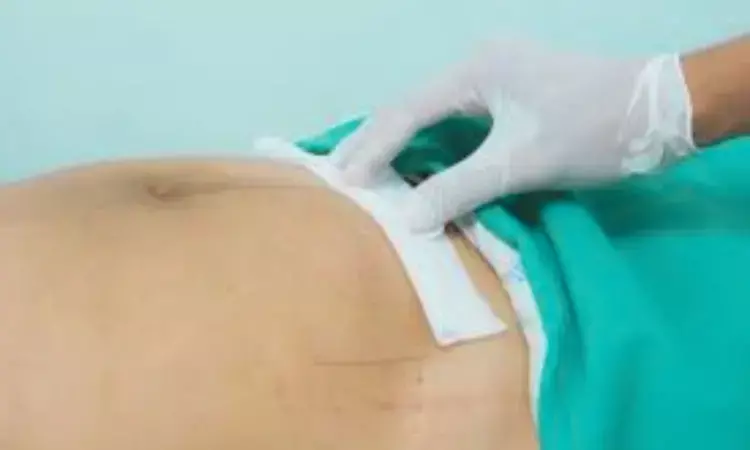- Home
- Medical news & Guidelines
- Anesthesiology
- Cardiology and CTVS
- Critical Care
- Dentistry
- Dermatology
- Diabetes and Endocrinology
- ENT
- Gastroenterology
- Medicine
- Nephrology
- Neurology
- Obstretics-Gynaecology
- Oncology
- Ophthalmology
- Orthopaedics
- Pediatrics-Neonatology
- Psychiatry
- Pulmonology
- Radiology
- Surgery
- Urology
- Laboratory Medicine
- Diet
- Nursing
- Paramedical
- Physiotherapy
- Health news
- Fact Check
- Bone Health Fact Check
- Brain Health Fact Check
- Cancer Related Fact Check
- Child Care Fact Check
- Dental and oral health fact check
- Diabetes and metabolic health fact check
- Diet and Nutrition Fact Check
- Eye and ENT Care Fact Check
- Fitness fact check
- Gut health fact check
- Heart health fact check
- Kidney health fact check
- Medical education fact check
- Men's health fact check
- Respiratory fact check
- Skin and hair care fact check
- Vaccine and Immunization fact check
- Women's health fact check
- AYUSH
- State News
- Andaman and Nicobar Islands
- Andhra Pradesh
- Arunachal Pradesh
- Assam
- Bihar
- Chandigarh
- Chattisgarh
- Dadra and Nagar Haveli
- Daman and Diu
- Delhi
- Goa
- Gujarat
- Haryana
- Himachal Pradesh
- Jammu & Kashmir
- Jharkhand
- Karnataka
- Kerala
- Ladakh
- Lakshadweep
- Madhya Pradesh
- Maharashtra
- Manipur
- Meghalaya
- Mizoram
- Nagaland
- Odisha
- Puducherry
- Punjab
- Rajasthan
- Sikkim
- Tamil Nadu
- Telangana
- Tripura
- Uttar Pradesh
- Uttrakhand
- West Bengal
- Medical Education
- Industry
Study Questions Appropriateness of Biologic and Biosynthetic Mesh Use in Ventral Hernia Repairs

USA: A recent study published in JAMA Surgery has provided valuable insights into the use of biologic and biosynthetic mesh in current practices for ventral hernia repair.
The researchers revealed that in a large cohort of patients undergoing ventral hernia repair, 1 in 10 mesh-based repairs involved using biologic or biosynthetic mesh. While these materials were more likely to be used in urgent or emergent surgeries and cases with wound contamination, nearly 90% of their use was in elective repairs with clean wound classifications. This finding raises concerns about the appropriateness of their application in routine clinical practice.
Originally designed for use in contaminated fields, biologic and biosynthetic meshes are increasingly questioned for their effectiveness in ventral hernia repair. Despite this, little is known about their current prevalence and usage patterns. To address this gap, Cody L. Mullens, Department of Surgery, University of Michigan, Ann Arbor, and colleagues aimed to analyze the prevalence of biologic and biosynthetic mesh in ventral hernia repair and identify the factors influencing their application.
For this purpose, the researchers conducted a retrospective cohort study using a statewide clinical registry in Michigan to analyze data from adults who underwent mesh-based ventral hernia repair between January 1, 2021, and December 31, 2023. Data analysis was performed from February to May 2024. The study focused on comparing biologic or biosynthetic mesh with synthetic mesh, with the primary outcome being the use of biologic or biosynthetic mesh as recorded in operative reports. Multivariable logistic regression was applied to identify factors associated with the use of these advanced mesh types.
The following were the key findings of the study:
• A total of 10,838 patients underwent mesh-based ventral hernia repair, with a mean age of 55.7 years; 42.6% (4,619) were female.
• Among these, 10.8% (1,174 repairs) were performed using biologic or biosynthetic mesh, while 89.2% (9,664 repairs) used synthetic mesh.
• Of the 1,174 cases using biologic or biosynthetic mesh:
• 87.1% (1,023 cases) had clean wound classifications.
• 88.5% (1,039 cases) were performed electively.
• Wound contamination was significantly associated with the use of biologic or biosynthetic mesh:
• Clean-contaminated wounds: Adjusted odds ratio (aOR) 2.17.
• Contaminated wounds: aOR 2.95.
• Dirty or infected wounds: aOR 36.22.
• Other factors linked to increased odds of biologic or biosynthetic mesh use included:
• Urgent or emergent surgical priority (aOR 1.69).
• Laparoscopic or robotic surgical approach (aOR 1.31).
• Larger hernia width (aOR 1.03 per centimeter).
• Use of myofascial release (aOR 2.10).
The authors concluded that 1 in 10 ventral hernia repairs involved biologic or biosynthetic mesh. While its use was more likely in nonelective surgeries and cases with wound contamination, nearly 90% of these cases were elective repairs with clean wound classifications. This finding raises concerns about its appropriateness in routine practice and highlights potential opportunities to enhance patient outcomes and reduce healthcare costs.
Reference:
Mullens CL, Schoel L, McGee MF, Ehlers AP, Telem D, Howard R. Use of Biologic and Biosynthetic Mesh for Ventral Hernia Repair in Current Practice. JAMA Surg. Published online December 11, 2024. doi:10.1001/jamasurg.2024.5293
Dr Kamal Kant Kohli-MBBS, DTCD- a chest specialist with more than 30 years of practice and a flair for writing clinical articles, Dr Kamal Kant Kohli joined Medical Dialogues as a Chief Editor of Medical News. Besides writing articles, as an editor, he proofreads and verifies all the medical content published on Medical Dialogues including those coming from journals, studies,medical conferences,guidelines etc. Email: drkohli@medicaldialogues.in. Contact no. 011-43720751


